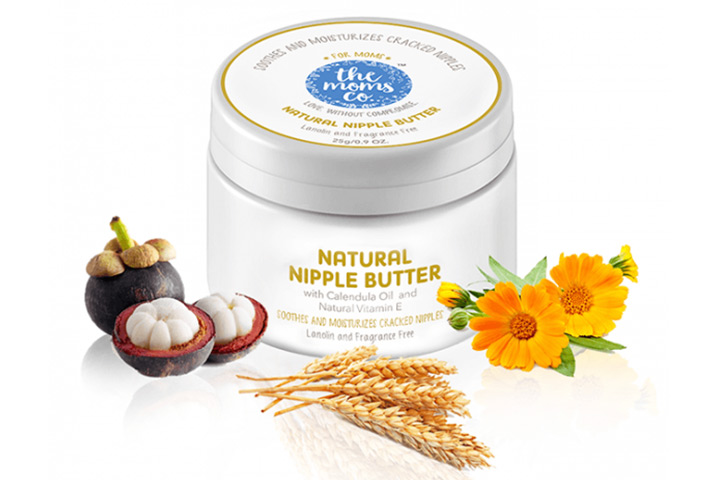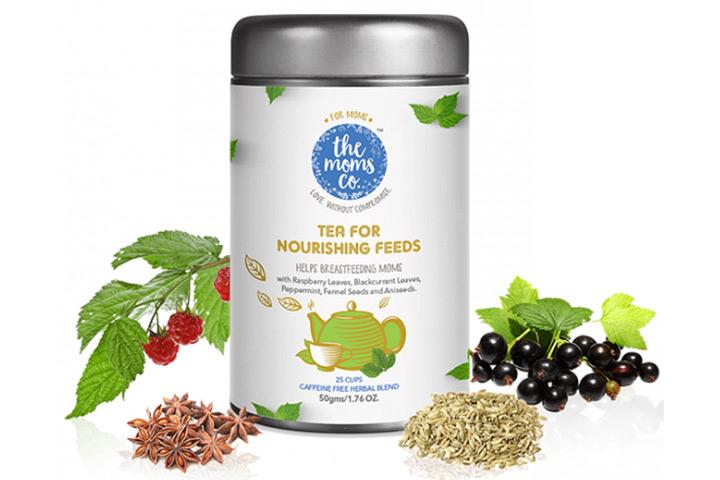
Image: Shutterstock
Breastfeeding is probably one of the most special experiences of motherhood. Having an intimate connection with your baby, being responsible for his/her nutritional nourishment, feeling the rush of love and adoration while your little one feeds, etc. are all a part of breastfeeding, making it a rewarding and beautiful experience.
However, there is also the troublesome side of being a breastfeeding mother, which has to do with the aspect of the physical discomfort and pain that you, as a mother, might end up facing when you’re breastfeeding your baby.
The levels of discomfort can range from being a slight tingle/itch in your breasts to the nipples getting painfully cracked and chafed. In some instances, the cracking of the nipples could even go on from simply being painful to causing medical conditions such as nipple thrush, which can affect both you and your child.
All that trouble is certainly not going to be on any breastfeeding mom’s radar, which is why we’re going to today talk about nipple and breast care. It’s important to make sure that while taking care of your baby, you don’t forget to take care of yourself as well.
Here are some things to consider:
1. Latch Positioning
One of the most common culprits of breast/nipple pain is the positioning for the breastfeeding latch. A lot of mothers tend to position the baby in an incorrect manner, where the baby’s head is incorrectly aligned with the breast, resulting in a painful experience during breastfeeding.
Change your baby’s positioning during breastfeeding. Aim the nipple towards his/her nose and make sure that the feeding position is comfortable for both you and your child. Improvement in the latch position, according to a study, managed to fix breast/nipple pain problems in 65% of the women, so it’s definitely worth giving it a try (1)!
2. Blocked Milk Ducts/Mastitis
When a milk duct in the breast gets blocked, it could cause a lot of pain to the breastfeeding mother and can also affect the flow and supply of the milk, causing problems for the baby. It is important to address a blocked milk duct soon, and you can do this by applying a warm, wet washcloth to the affected area in an attempt to drain out the breast.
If the blocked milk duct doesn’t clear itself out after a few days, it could lead to a condition known as mastitis, which can then become a cause for the development of an abscess, thrush or other infections. The treatment of mastitis usually involves changing the mother’s breastfeeding technique, which often involves taking counsel from a lactation expert. Depending on your condition antibiotics may be prescribed by your doctor. If the mastitis is left to go untreated, it could result in the formation of an abscess, which would require surgical intervention (2).
3. Treating Cracked Nipples
Getting cracked nipples during breastfeeding is relatively common, but it’s necessary to ensure that the problem doesn’t escalate beyond that point. Treating cracked nipples does not have to be difficult, as there are some very effective products that you can use for the same.
Before you pick the product of your choice to treat your nipple cracks, make sure that it’s safe for both you and your baby. Particles of the product might end up going inside your baby’s mouth, and any toxins or harmful chemicals can end up causing even more problems as a result.
One of the best products to treat cracked nipples is “The Moms Co. Natural Nipple Butter”, a toxin-free, lanolin-free, baby-safe, natural product that helps treat cracked nipples, reduces the possibility of further infections and alleviates pain. With ingredients like Calendula Oil known for its healing and protective ability, Kokum Butter to reduce degeneration of skin cell and restore elasticity, Natural Vitamin E known to prevent skin damage and Wheat Germ Oil to nourish and heal skin, it is a , true lifesaver for breastfeeding mothers! The company also houses an entire range of Australian certified toxin-free products for pregnancy and baby care. You can check out the products here.
4. Thrush Infection
If you and/or your baby have contracted a thrush infection due to breastfeeding, you should seek medical help as soon as possible. Thrush can be seen as “un-wipe-able” white spots on your baby’s mouth and similar white patches on your nipple (3).
The pain caused by thrush is a lot more severe and extreme than regular let-down pain post-breastfeeding and should, therefore, be treated on a top priority basis.
5. Low breastmilk supply
Mother’s milk is nature’s health plan which is not only essential for the baby; but also strengthens the bond between the mother and the child. However, a breastfeeding mom is always concerned whether the milk is sufficient for her baby’s growing needs.
One of the age old remedies for this is consuming fennel seeds in water, The Moms Co. Tea for Breastfeeding Moms is enriched with the goodness of traditional herbs like Fennel seeds and Aniseeds known to increase the supply of milk.
Besides these tips, do make sure that you wipe your baby’s mouth, as well as your breasts, properly after a feeding session, as this reduces the chances of infections and other medical issues.
Breastfeeding does not have to be painful. Use the right products to avoid cracked nipples, make sure that your latch position is correct, address any medical problems as early as possible, and you’ll continue to experience the joys of breastfeeding the way they’re meant to be.

















